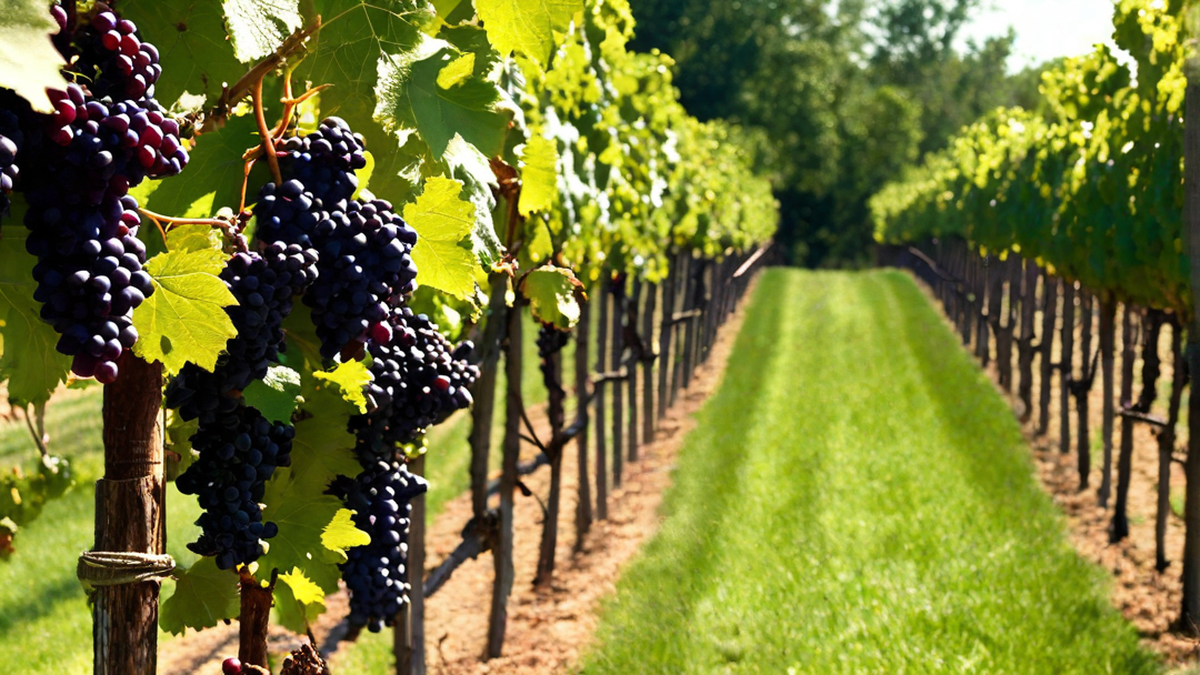Have you ever contemplated creating your own muscadine grape wine? As a fellow wine aficionado, let me assure you that it is not only achievable but also a fulfilling pursuit. In this piece, I am thrilled to share my personal experience of producing wine from muscadine grapes and furnish you with comprehensive guidelines to assist you in embarking on this delightful journey.
1. Choosing the Right Muscadine Grapes
Before you start making wine, it’s crucial to select the right muscadine grapes. Look for fully ripened grapes that are rich in color and have a sweet aroma. If possible, choose a variety known for its excellent wine-making qualities, such as Carlos or Noble. Quality grapes will significantly impact the flavor and quality of your wine.
2. Crushing and Pressing
Once you have your muscadine grapes, it’s time to crush and press them to extract the juice. Traditionally, this can be done by stomping on the grapes with your feet, but I prefer using a fruit crusher or juicer for more efficiency and cleanliness.
After crushing, transfer the grape pulp to a wine press and apply gentle pressure to separate the juice from the solids. Collect the juice in a clean container, and discard the remaining grape residue.
3. Primary Fermentation
Now that you have the precious grape juice, it’s time to initiate the primary fermentation process. Transfer the juice into a fermentation vessel, such as a glass carboy or a food-grade plastic bucket. Make sure the vessel is sanitized to avoid any unwanted bacterial growth.
Add wine yeast to the juice following the package instructions. The yeast will convert the natural sugars in the grape juice into alcohol. Cover the vessel with a clean cloth or a fermentation lock to allow carbon dioxide to escape while preventing any contamination from outside air.
4. Secondary Fermentation and Aging
After the primary fermentation is complete, it’s time for the secondary fermentation and aging process. Transfer the wine into a clean carboy, leaving behind any sediment that has settled at the bottom of the vessel. Attach an airlock to the carboy to allow the carbon dioxide to escape while preventing oxygen from entering.
Store the carboy in a cool, dark place with a consistent temperature of around 60-70°F (15-21°C). Let the wine age for several months, or even up to a year, to develop its flavors and complexity. During this time, the wine will continue to clarify, and any remaining sediment will settle at the bottom.
5. Bottling and Enjoying
Once the wine has aged to your liking, it’s time to bottle and enjoy your homemade muscadine wine. Sanitize the bottles and siphon the wine into them, leaving about an inch of headspace at the top. Cork the bottles tightly or use screw caps, ensuring a proper seal to preserve the wine’s integrity.
Store the bottles upright for a few days to allow the corks to fully expand and create a tight seal. After this, you can store the bottles horizontally to keep the corks moist and prevent them from drying out.
Now comes the best part – tasting your own creation! Open a bottle, pour yourself a glass, and savor the unique flavors and aromas of your muscadine wine. Share it with friends and family, and enjoy the fruits of your labor!
Conclusion
Making wine from muscadine grapes is a fulfilling and enjoyable process. It allows you to connect with nature, showcase your creativity, and enjoy the satisfaction of crafting something truly remarkable. Remember, each batch of wine you make will have its unique character, influenced by factors such as grape variety, fermentation technique, and aging time. So, don’t be afraid to experiment and make it your own.
Start your own muscadine wine-making journey today, and let the sweet taste of success fill your glass!
